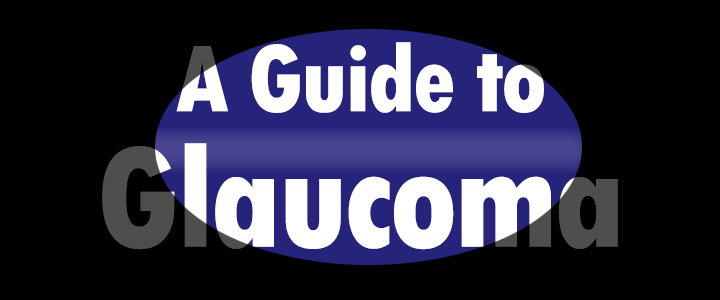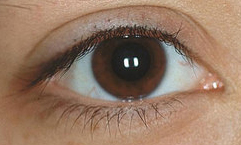A Guide to Glaucoma (Part 1)

What is Glaucoma? Warning Signs/Symptoms and Glaucoma-Related Vision Loss

Vincent and Helene Krug, grandparents of Scott Krug, President New England Low Vision and Blindness.
Our owner Scott Krug (President of New England Low Vision and Blindness) tells the story of his aunt (Maryann) and uncle (Kurt) riding in the backseat when his grandfather Vince was driving. His grandmother (Helene) kept saying, “No, not yet Vince. No, no. Not yet.” Scott’s aunt and uncle were wondering what was happening when suddenly they heard, “Now Vince! Turn left now!”
Needless to say, Scott’s aunt and uncle were in shock to discover that their dad could no longer see from the sides of his eyes and that his glaucoma had gotten so bad that while driving he relied on his wife to tell him when it was clear and safe and when to turn the car.
Although this story has a happy ending—they all made it home safe and had an in-depth conversation about Vince’s glaucoma, vision loss, and driving—it does bring up some questions…
How many people drive blind? How many people are “just daytime” drivers, “right turn only” drivers, or “just errands” drivers? How many other drivers out there have glaucoma-related vision loss?
Many people have glaucoma and do not even know it. Prevent Blindness estimates that 3 million people over age 40 in the United States have glaucoma, and it is said that half the people living with this disease are unaware they have it. Glaucoma is also the second leading cause of blindness worldwide.
The good news is that it is easy to find out if you have glaucoma, vision loss due to glaucoma is very preventable, and if you do have low vision from glaucoma, there are great low vision devices to help you live a full, independent life with glaucoma.
What is Glaucoma
Glaucoma is the build-up of pressure in the eye that can damage your optic nerve and lead to vision loss. Glaucoma is called the “silent thief of sight” because it often has no symptoms, and it slowly steals your vision. If left untreated, glaucoma can make you lose your peripheral (or side) vision and can even lead to total blindness.
 Typically, glaucoma affects both eyes. As the eyes age, their ability to drain the fluid (also known as aqueous humor) they produce can diminish. As excess fluid builds, so does pressure within the eye. This pressure (also known as intraocular hypertension) can damage the optic nerve and slowly kill the bundle of nerve fibers that send vision signals from the retina to the brain.
Typically, glaucoma affects both eyes. As the eyes age, their ability to drain the fluid (also known as aqueous humor) they produce can diminish. As excess fluid builds, so does pressure within the eye. This pressure (also known as intraocular hypertension) can damage the optic nerve and slowly kill the bundle of nerve fibers that send vision signals from the retina to the brain.
In early stages, eye diseases like glaucoma have no symptoms, but with a thorough eye exam, an eye doctor (ophthalmologist or qualified optometrist) can detect and treat glaucoma reducing your risk of permanent vision loss.
4 Major Types of Glaucoma
Not all glaucoma is the same; here are the four major types of glaucoma:
Primary Chronic Open Angle Glaucoma
Primary Chronic Open Angle Glaucoma is the most common type of glaucoma and covers about 90% of all glaucoma diagnoses. Open Angle Glaucoma is most often (but not always) caused by poor eye drainage in an aging drainage channel that builds eye pressure and damages the optic nerve.
Normal Tension Glaucoma
Normal Tension Glaucoma is not related to high pressure in the eye, but occurs in people abnormally sensitive to regular eye pressure. This type of glaucoma damages the optic nerve even without increased pressure. Sometimes this form of glaucoma is related to a reduced blood supply to the optic nerve.
Acute Angle Closure Glaucoma
Acute Angle Closure Glaucoma occurs when the eye drainage system becomes suddenly blocked and rapidly builds pressure in the eye. With Acute Angle Closure Glaucoma you may experience serious symptoms, such as blurred vision, severe eye pain, headaches, nausea, vomiting and/or seeing rainbow-like halos around lights. If this happens, you should immediately get emergency medical care. This type of glaucoma is more prevalent among Asians and Native Americans.
Secondary Glaucoma
Secondary Glaucoma is caused by an inflammation of the eye, a trauma to the eye, a tumor or other eye condition or disease that builds pressure within the eye and damages the optic nerve.
Warning Signs/Symptoms of Glaucoma
Not everyone experiences the same warning signs and glaucoma symptoms. Some people have no symptoms at all. Having said that, symptoms of glaucoma can include:
- Red eyes
- Watery eyes
- Dry, itchy, or burning eyes
- Severe headaches
- Unusual blinking or squinting
- Red-rimmed, swollen or crusty eyelids
- Light sensitivity
- Pain in or near the eyes
- Nausea
- Seeing “halos” or rainbows around bright lights
- Change in iris color
- Blurred vision
- Double vision
- Seeing dark spots or black spots or flashes of light
- Sudden loss of vision in one eye
It is important if you experience any of these warning signs or symptoms that you notify your eye doctor right away.
4 Stages of Glaucoma-Related Vision Loss (if not treated)
The most important thing to know if you have glaucoma is that vision loss is almost always preventable. However, if left untreated, glaucoma can lead to total blindness, so get your eyes checked regularly and follow any treatment plan prescribed if you do have glaucoma.
Also, know that even if you do have vision loss from glaucoma, there are amazing low vision devices that can help you keep your full independent lifestyle.
Here are stages of vision loss you may experience if your glaucoma is left treated:
Stage One—No Symptoms
At the earliest stage of glaucoma, there are no symptoms or pain. You may not even be aware that you have glaucoma until you have already lost a significant amount of vision. Some people can lose as much as 40% of their vision before they notice there is a problem.
Stage Two—Tunnel or Pinhole Vision
 At the next stage, you slowly lose your peripheral vision (your ability to see on the sides or out of the corner of your eyes). This can result in “tunnel” vision or “pinhole” vision and looks as if you are seeing through a straw. You may still have good central vision but have lost your side vision. If you have to turn your head to see what is beside you, you may have glaucoma.
At the next stage, you slowly lose your peripheral vision (your ability to see on the sides or out of the corner of your eyes). This can result in “tunnel” vision or “pinhole” vision and looks as if you are seeing through a straw. You may still have good central vision but have lost your side vision. If you have to turn your head to see what is beside you, you may have glaucoma.
Stage Three—Decreased Central Vision
At this stage, even your straight-ahead or central vision can decrease. You may see dark spots at your central vision and have decreased vision overall.
Stage Four—Blindness
Finally, if your glaucoma is not treated you may lose your vision altogether and become totally blind.
Whatever type of glaucoma you have, know that vision loss due to glaucoma is very preventable. However, if you have glaucoma and you do not care for it, you can go blind. Be sure to have you and your loved ones’ eyes checked annually. January is a great time to get a comprehensive eye exam as part of Glaucoma Awareness Month. This may just save your vision.
As part of our work to increase awareness about glaucoma and glaucoma-related vision loss and living with glaucoma we have written a 4-part Guide to Glaucoma. Please share this Guide with friends and remember to get your eyes tested for glaucoma annually. If you do have glaucoma-related vision loss, call us at 888-211-6933 to learn how low vision aids can help you.
In Part Two of our Glaucoma Guide we discuss who’s at risk for developing glaucoma and how to prevent vision loss from this disease.
In Part Three of our Glaucoma Guide we discuss tests and treatments for glaucoma.
In Part Four of our Glaucoma Guide we discuss how glaucoma affects your vision and low vision and blindness aids for people with vision loss from glaucoma.
Please share this important information with your friends, and be sure to check back for Part Two of our Guide to Glaucoma to learn Who is at Risk for Glaucoma and How to Prevent Vision Loss From Glaucoma.



